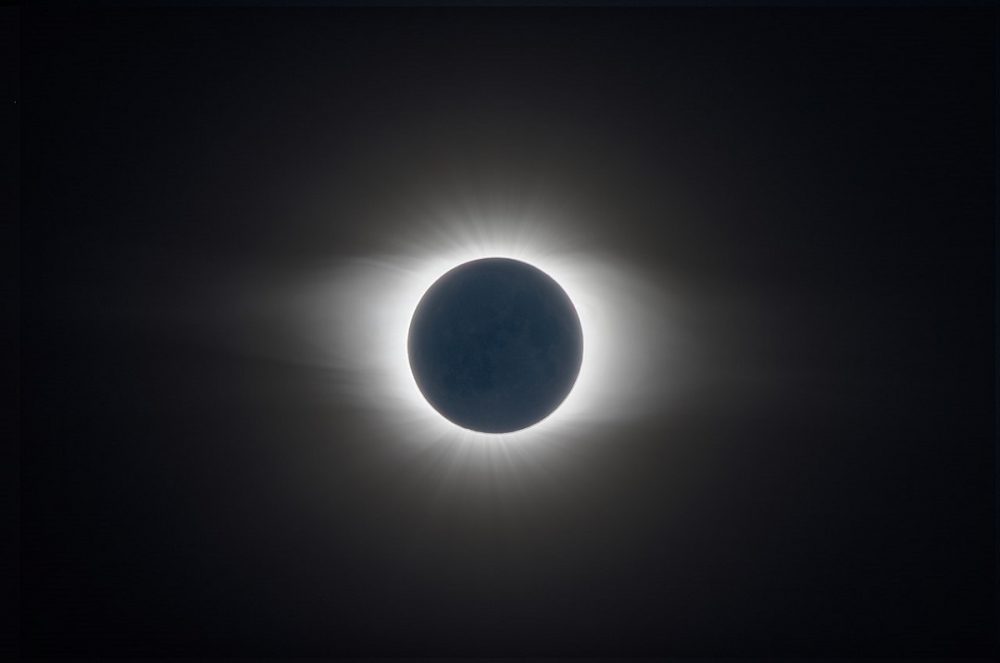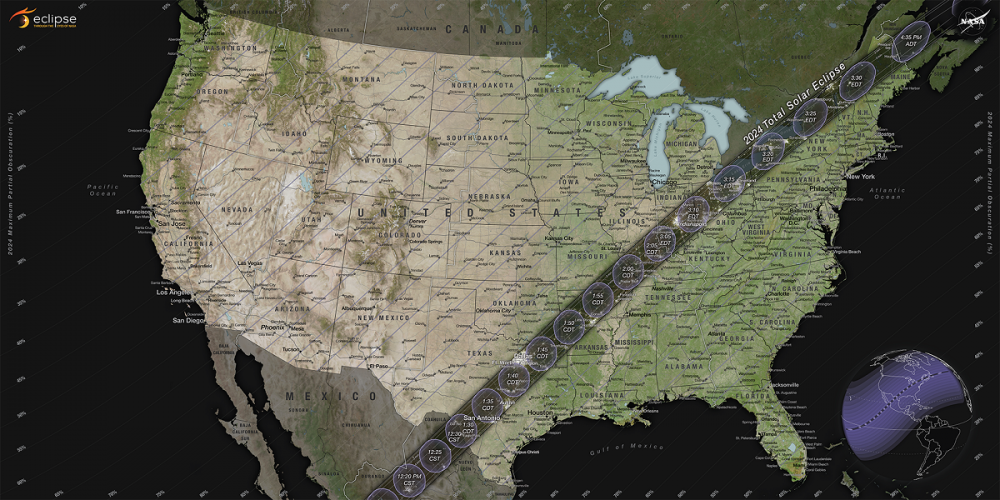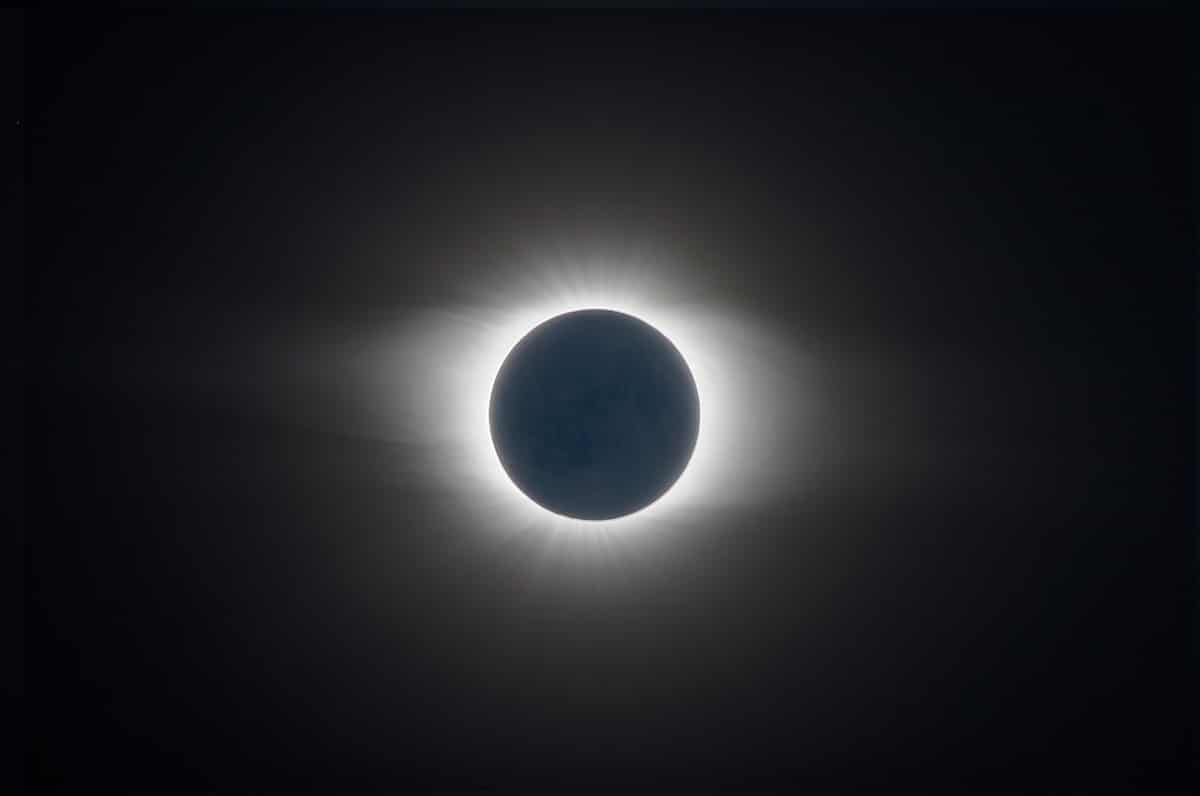
Photo: European Space Agency via CC BY-SA 3.0 IGO
On the afternoon of April 8, the moon will pass between the Earth and sun, creating a total solar eclipse across a narrow swath of the United States, Mexico, and Canada. This occurrence is expected to draw vast crowds of spectators to the eclipse’s approximately 115-mile-wide “path of totality,” which will curve from Texas to Maine in the U.S. But what if you’re in this path and behind the wheel during the brief few minutes when the sun will be completely obscured?
If you miss this rare event, you won’t be able to see another one anywhere in the U.S. until 2044. So, if you care at all about seeing it, identify a suitable vantage point, make plans to be off the road, and safely take in the spectacle through a pair of eclipse glasses or a solar viewer. If you can’t avoid driving during this time, the AAA has provided seven tips to help you stay safe when everything goes dark.

Image: NASA’s Scientific Visualization Studio
- Make sure your headlights are on. Even though a total eclipse only lasts a few minutes, driving in one will be like driving after dark.
- Use your vehicle’s sun visor to block the sun, even while it’s fully covered by the moon. This will help you avoid the distraction of looking up at the eclipse — and the risk of seriously damaging your eyes.
- If you have a pair of eclipse glasses handy, don’t even think about putting them on and trying to view the eclipse while you’re driving. You won’t be able to see the road at all, and you’ll put yourself and everyone around you at risk.
- Likewise, and this point should be self-explanatory, don’t even think about trying to take photos or videos of the eclipse while driving.
- You might be tempted to pull over to the side of the road or the highway to watch, but it’s not safe to do this — especially during a period of unexpected darkness, potentially heavy traffic, and mass distraction.
- If you do want to pull over and watch the eclipse, do it safely by getting off the road altogether and parking where there’s no traffic (but it’s better to plan ahead so you’re off the road well before the eclipse begins).
- Watch out for pedestrians! Everyone you see is likely to have their attention fully occupied by the eclipse.
If you live in or near the path of totality and plan to drive anywhere on April 8, it’s also important to pay close attention to advice and warnings from local public safety officials. With the potential for millions of visitors in communities where the total eclipse will be visible, don’t be surprised if you encounter crowded roadways, traffic jams, and unexpected delays on the day of this exciting astronomical event.
A longtime editor/writer and recently transplanted Hoosier, Caleb Cook lives in Xenia, Ohio. His favorite activities are reading and listening to music, although he occasionally emerges from the heap of books and vinyl records in his basement to stand blinking in the sunlight. Once fully acclimated to the outside world again, he can be observed hanging out with his wife, attempting a new recipe in the kitchen, attending movies, walking the dog, or wandering into a local brewery to inquire about what’s on tap. See more articles by Caleb.



